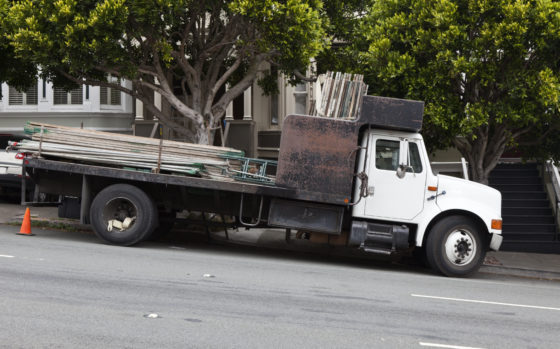Moving equipment is all around us. It’s used in most if not all industries. Securing mobile equipment is essential to safety of workers and the public.

Photo credit: iStock.com/Joe_Potato
“Since 2006, more than 220 workers have been seriously injured by improperly secured vehicles in B.C. Sixteen of these incidents were fatal,” reads Improperly secured vehicles put workers’ lives at risk, a WorkSafe Bulletin.
This includes workers in log hauling and other forestry operations, general trucking, construction, towing, TV production, and others. In a tragic case now under investigation, on a construction site in Coquitlam, two people died when a runaway truck caused a multi-vehicle crash. Several others were taken to hospital, according to this Vancouver Sun news story. My deepest sympathies go to all the loved ones and communities affected.
Last year in the forest industry, three young workers died in separate log hauling fatalities. I wrote about them in my post Tragedy a reminder to secure vehicles before repairs and maintenance.
In one of those incidents, a young worker was run over by a logging truck he and a co-worker were trying to repair. They had been driving the empty truck to a logging camp near Fraser Lake when they stopped to fix a mechanical issue.
Securing mobile equipment
Each machine has different safety requirements. In general, drivers can secure their vehicles by:
- Applying the parking brake
- Placing the transmission in the manufacturer’s specified park position
- Chocking the wheels
Employers have a duty to develop written safe work procedures, and workers need to know them. The WorkSafe Bulletin I mentioned above has more details about this.
“Securing mobile equipment is very specific to the equipment you’re working on and where you’re working on it,” says Will Heller, an Occupational Health and Safety advisor with SafetyDriven – the Trucking Safety Council of BC.
“What you really need is to have a lockout/tagout procedure and written safety procedures that complement it.”
If you can, choose a location without an incline, to avoid any chance of rolling. But wherever you park, make sure you have control of the keys, and that you have applied all the brakes and placed chocks under the wheels.
Will also suggests selecting a spot as free from traffic as possible. “If you’re sitting on the side of a rural road and there’s no one going by, it presents fewer hazards than if you’re sitting on a highway and people are flying by at 80 kilometres an hour trying to get home after work.”
While specifics vary, every vehicle and piece of equipment needs to be secured when a driver leaves the controls. For more information, see my post Keeping safe during repairs and maintenance.
B.C. Forest Safety Council alerts
- 2016-01-31 – Log Truck Driver/Worker Fatality Alert
- 2015-10-14 – Worker Fatality Alert
- Close call: Crew truck rolls while worker underneath conducting inspection
WorkSafeBC alerts


